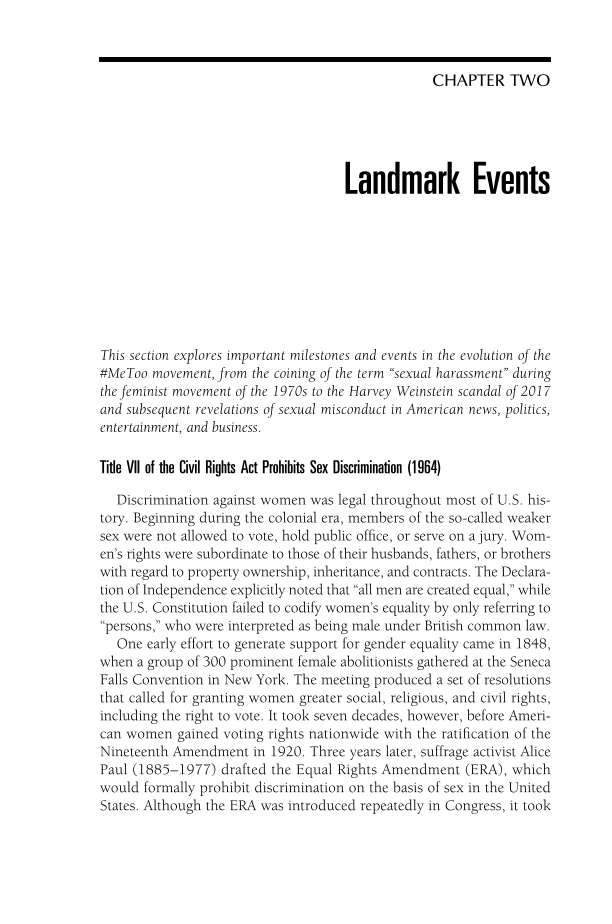CHAPTER TWO Landmark Events This section explores important milestones and events in the evolution of the #MeToo movement, from the coining of the term “sexual harassment” during the feminist movement of the 1970s to the Harvey Weinstein scandal of 2017 and subsequent revelations of sexual misconduct in American news, politics, entertainment, and business. Title VII of the Civil Rights Act Prohibits Sex Discrimination (1964) Discrimination against women was legal throughout most of U.S. his- tory. Beginning during the colonial era, members of the so-called weaker sex were not allowed to vote, hold public office, or serve on a jury. Wom- en’s rights were subordinate to those of their husbands, fathers, or brothers with regard to property ownership, inheritance, and contracts. The Declara- tion of Independence explicitly noted that “all men are created equal,” while the U.S. Constitution failed to codify women’s equality by only referring to “persons,” who were interpreted as being male under British common law. One early effort to generate support for gender equality came in 1848, when a group of 300 prominent female abolitionists gathered at the Seneca Falls Convention in New York. The meeting produced a set of resolutions that called for granting women greater social, religious, and civil rights, including the right to vote. It took seven decades, however, before Ameri- can women gained voting rights nationwide with the ratification of the Nineteenth Amendment in 1920. Three years later, suffrage activist Alice Paul (1885–1977) drafted the Equal Rights Amendment (ERA), which would formally prohibit discrimination on the basis of sex in the United States. Although the ERA was introduced repeatedly in Congress, it took
Document Details My Account Print multiple pages
Print
You have printed 0 times in the last 24 hours.
Your print count will reset on at .
You may print 0 more time(s) before then.
You may print a maximum of 0 pages at a time.

































































































































































